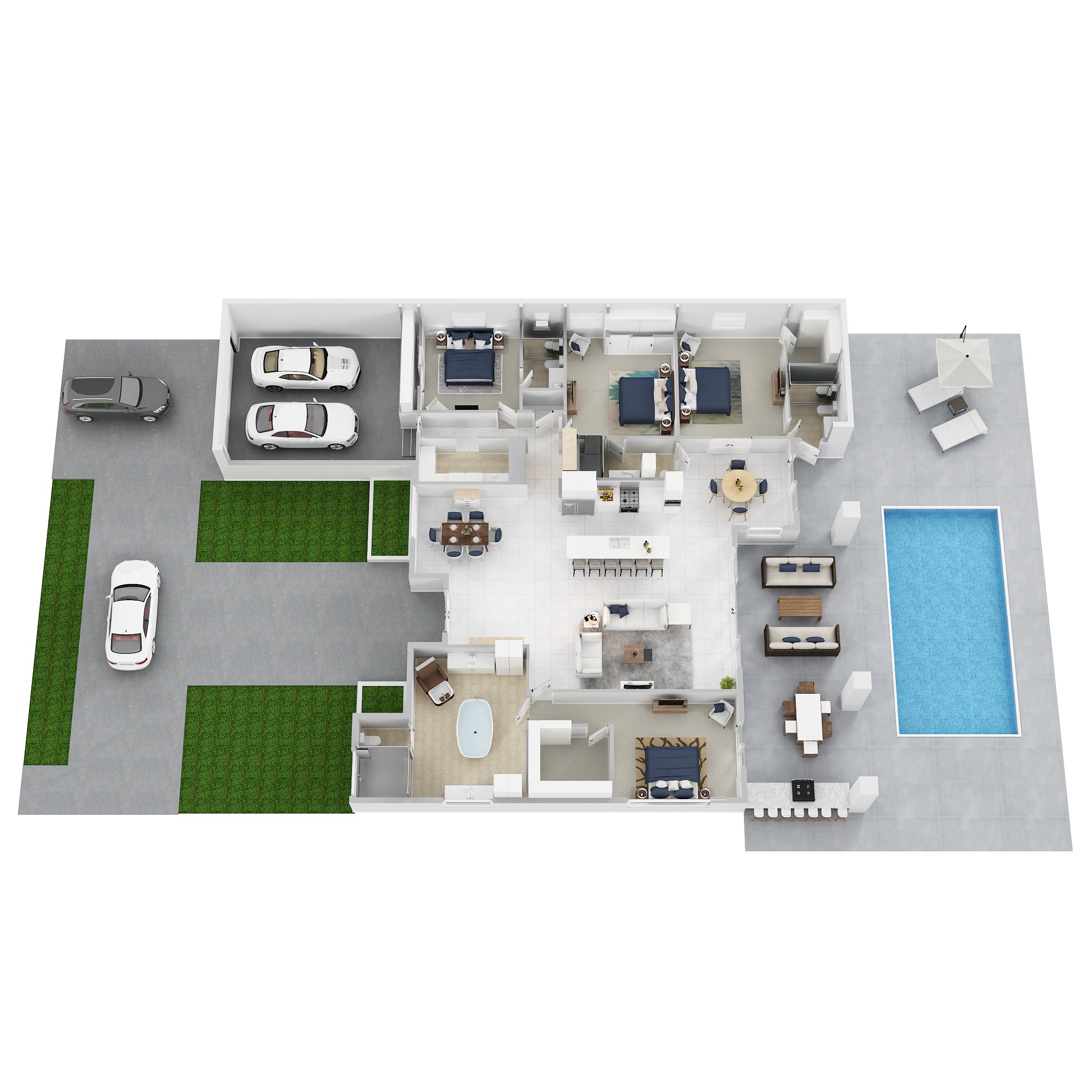It’s much easier to visualize your building in 3D than just flat on paper. Here’s how you can make your building come to life with a 3D visualization.
The clients are notoriously skeptical. They’ve got money on the line and don’t always have the experience necessary to see the big picture.
That’s where 3D visualization comes in. It bridges the gap from your CAD, BIM, or paper plans for your clients. It puts them inside your design so they know exactly what to expect–no imagination necessary.
Here’s the rundown on how to use 3D visualization to take your designs to the next level.
Tell a story with 3D renderings
3D renderings are an essential part of the design process that builds an emotional connection between your client and your design. In the process of creating one, think of yourself as an architectural photographer.
Your 3D renderings should tell a story about the building you’re creating and the people that frequent it. Incorporate aspects of great photography to make the most effective render you can. Things like:
- Point of view positioning. The point of view of your render should feel like the viewer is standing in the building (about 6 feet high is a good perspective).
- Composition. The rule of thirds is all about image balance and focus. Divide your image into nine even boxes, then put your most interesting design elements where your lines intersect for great composition every time.
- Leading lines. Leading lines tell a viewer where to look in an image. Put them in the foreground or edges of your rendering to direct the viewers’ eyes inward to your design’s focal points.
3D renderings are great for connecting a client to your design, but sometimes you need something more.
Augmented reality offers unmatched 3D visualization
While virtual reality (VR) renders an entirely new environment for a user to experience, augmented reality (AR) is a mix of both real and rendered components. AR doesn’t replace the world we live in, it adds to it.
With AR, a designer superimposes visual and audio components over a real environment. As an architect, you can imagine what that means for your designs: impeccable 3D visualization that simulates every detail of your building.
The benefits of AR for your project
AR is portable, making it extremely beneficial for on-site visualization purposes. Using a mobile device, you can see your proposed 3D structure on the actual job site and make changes in real-time. Allowing your client to see exactly how the final design will look on their land with more clarity than a desktop render can offer.
AR also allows for a virtual walkthrough, which makes it easier to spot flaws and constructability issues before you even enter the construction phase. That means:
- fewer change orders
- fewer building errors
- more accurate specs for prefabrication of building components
All things that will keep your project on schedule and within budget.
3D technologies just keep getting better
As any architect knows, conveying your vision to the client is half the battle. 3D visualization helps you win the fight every time by letting your design speak for itself.
But there are many 3D technologies available for firms to take advantage of, so don’t hesitate to contact us with any of your questions. We have the expertise to bring your idea from planning all the way through construction with stunning results.

